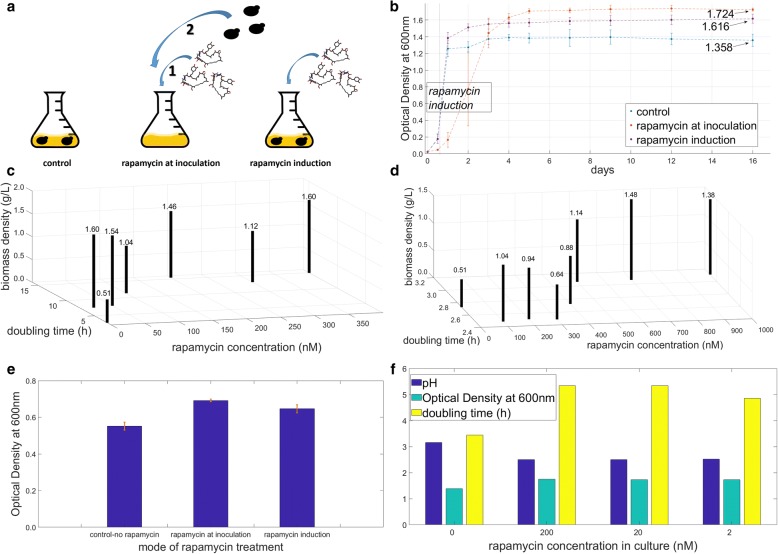Fig. 1.
Optimisation of the working concentration and the mode of administration of rapamycin. Schematic representation of the experimental setup for investigating the effects of different modes of rapamycin treatment where the cells are either introduced to rapamycin-containing medium, or a culture at steady growth was induced by rapamycin (a). Growth profiles of yeast culture under the tested conditions. The optical density (OD) of the cultures was plotted against the number of days of culturing. The OD at which rapamycin induction was done was designated by the “rapamycin induction” box. The final undiluted ODs for each mode of treatment on day 16 was designated by an arrow (b). The average biomass density of the cultures inoculated into rapamycin containing medium (c) and that of rapamycin-induced cultures (d) were plotted against the rapamycin concentration employed in the treatment and the doubling time of the culture calculated from its maximum specific growth rate. The numerical values for biomass density are indicated above each bar. The variation in the final undiluted OD values among cultures that were subjected to the same mode of treatment were highlighted in orange; despite all variation being within acceptable limits, that of cells inoculated into rapamycin containing medium were remarkably lower than that of the control and the other mode of treatment (e). The effect of lowering the working concentration of rapamycin (on the abscissa) on the final extracellular pH of the culture (column in navy), the final OD value reached (column in teal) and the doubling time during balanced growth (column in yellow) are provided in a range of 2 orders of magnitude: 2 – 200 nM (f)

